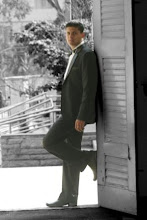
The skeleton is the frame over which the dog's anatomy is structured. Along with a complex systems of muscles and tendons, it allows the dog to stand on its paws, sit, run, jump or walk. The muscles, firmly anchored on the bones, are the ones that put the dog's skeleton in motion.
The bones are hollow tubes with a hard and calcified weave filled with bony marrow. They are fed by blood vessels that lead to the inner part through very little holes. When a bone breaks, new cells are formed on its surface, they are designated to fill in the crack. During development, the long bones of the limbs grow by the edge in a process, controlled in a great deal by hormones, which stops when they reach maturity.
CONFIGURATION OF THE JAW
The type of bite, or the way in which the upper teeth fit with the lower ones, is determined by the length of the lower jaw. There are four types of bite: the scissors bite (the upper teeth perfectly fit with the lower ones); the prognatic bite (the lower teeth are ahead compared to the upper ones because the jaw is bigger than the maxillary); the protrude bite (the lower teeth are behind the upper ones
 because the lower jaw is smaller than the maxillary) and the normal or standard bite (the upper and lower teeth are lined up to the same level). All these configurations of the jaw are correct as long as they fit with the morphology of each breed. For example, the prognatism would be an inadmissible defect on a Golden Retriever, while it is perfectly normal of a Boxer or a Bulldog.
because the lower jaw is smaller than the maxillary) and the normal or standard bite (the upper and lower teeth are lined up to the same level). All these configurations of the jaw are correct as long as they fit with the morphology of each breed. For example, the prognatism would be an inadmissible defect on a Golden Retriever, while it is perfectly normal of a Boxer or a Bulldog.SKULL SHAPES
The skull shape in a dog varies from one breed to another, even when the bones that are part of it are the same in all the cases. There are three types of very different morpholog ies.
The breed with narrowed and elongated skulls, as the Afgans, are called Dolicocefalous, while the ones with flattened skulls, as the Bulldogs and the Boxers, are called Braquicefalous and the ones located among these extremes are known as Mesocefalous.



No comments:
Post a Comment